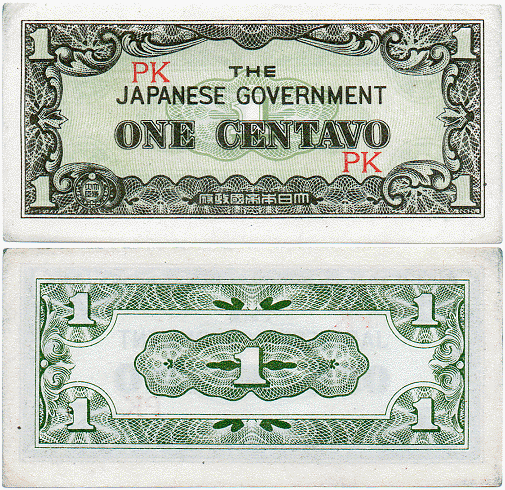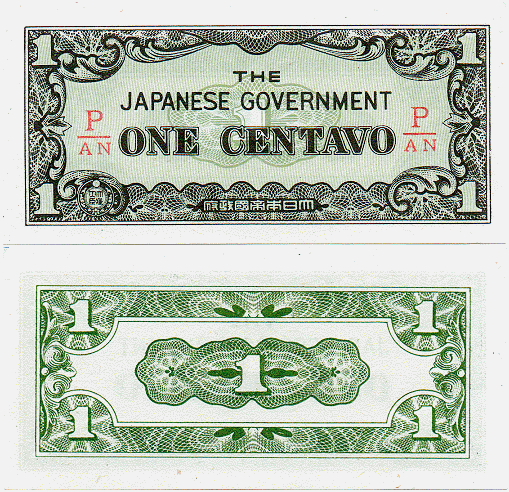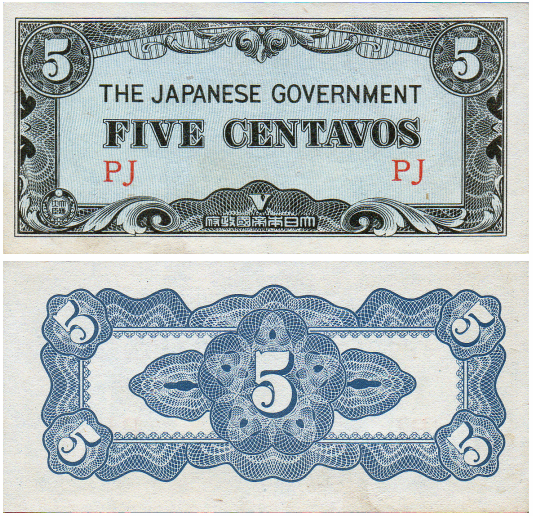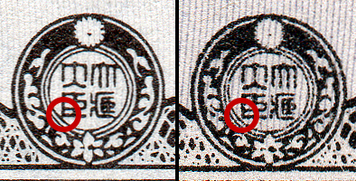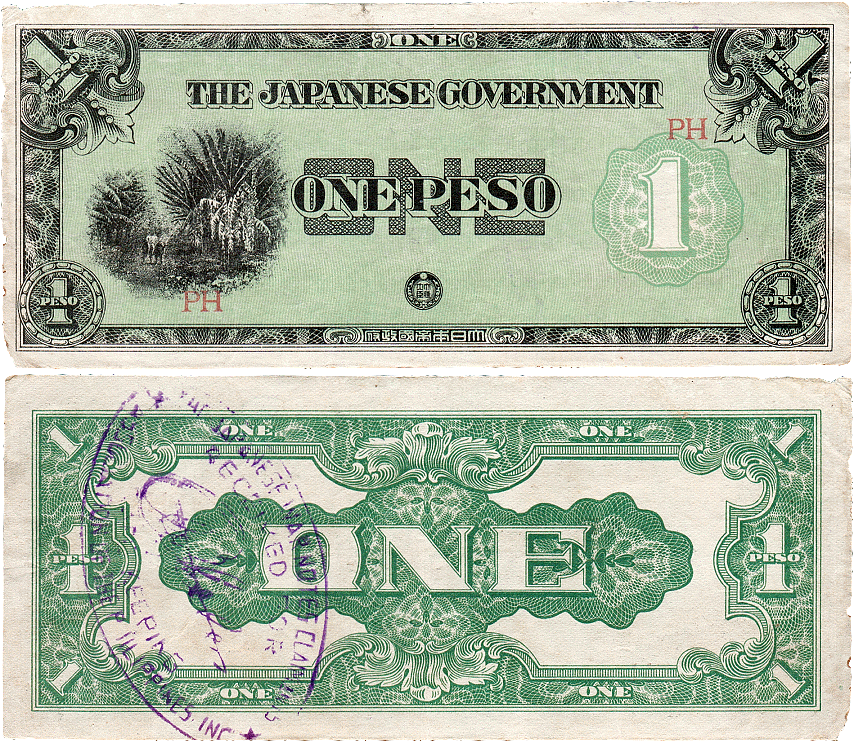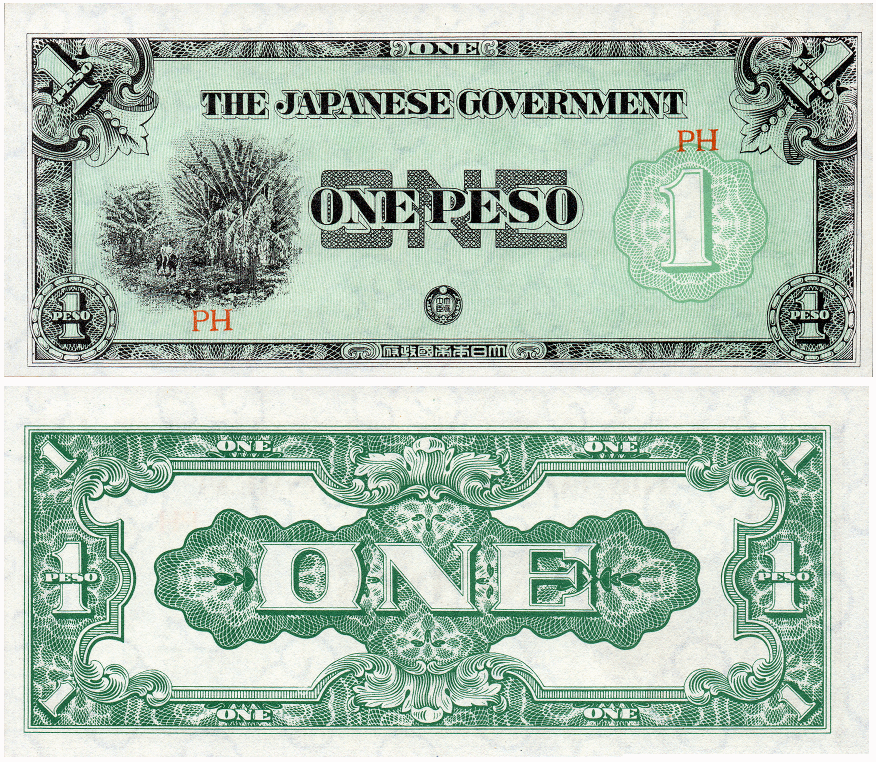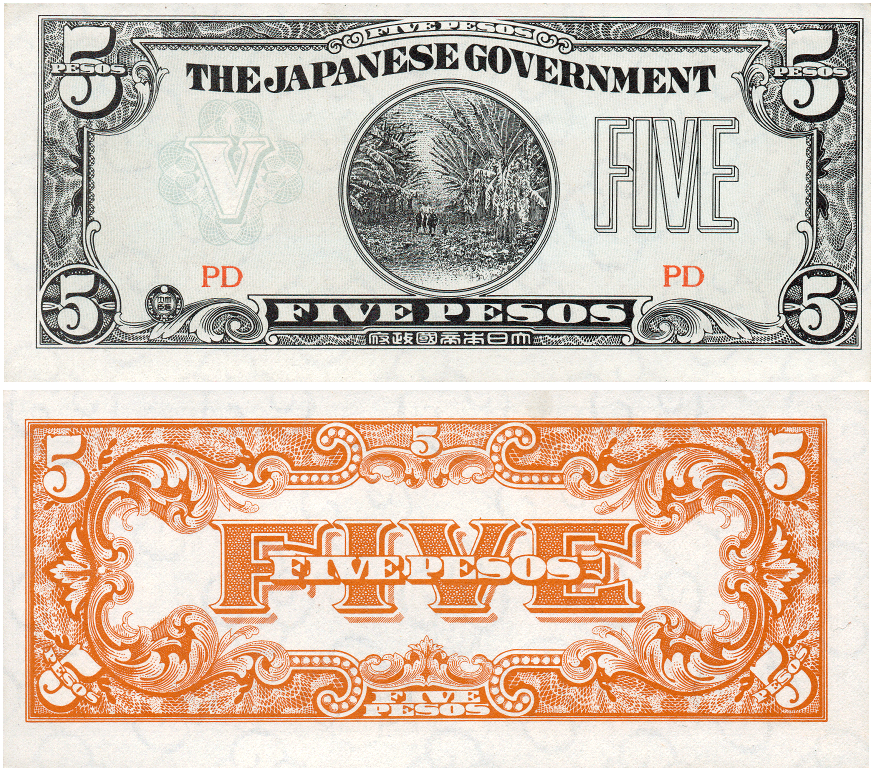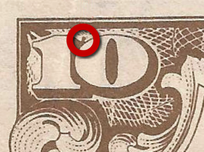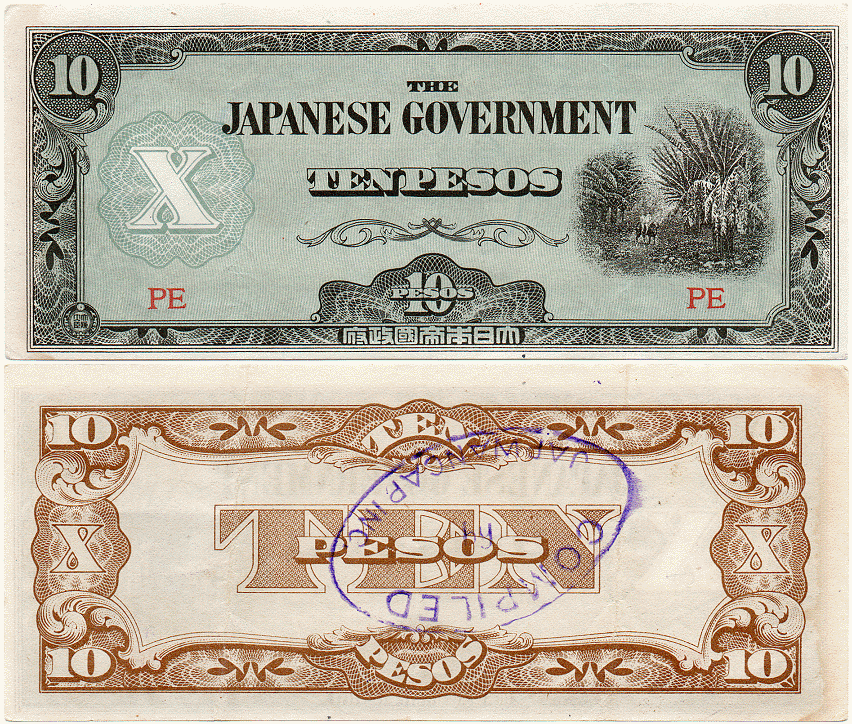The Japanese Occupation of the 'P' Philippines (updated August 13, 2016)
The Philippines were held as a Spanish territory from the 16th century until ceded to the United States in 1898, from which followed the Philippine-American war. The US won but eventually granted autonomy in 1916, followed by self government in 1934. On route to gaining Independence, the Japanese invaded in 1942, until defeat in 1945.
Beginning with the capture of the Philippines, the Japanese military confiscated all hard currency, both on a federal and individual level, replacing it with Japanese printed and later, locally printed notes. In a proclamation of 1942, this first issue was specifically referred to as 'War Notes' and 'Military Pass Money'. It seems that in the case of the Philippines, the primary issuer at least early on was the Bank of Taiwan. (http://www.nuff.ox.ac.uk/economics/history/Paper109/huffmajima109.pdf)
A proclamation was issued by the Japanese Commander in Chief, titled "Acts Punishable by Death"
The 13th was:
"(13) Any person who counterfeits military notes; refuses to accept them or in any way hinders the free circulation of military notes by slanderous or seditious utterances."
Called “Mickey Mouse Money” by local Filipinos, it circulated at low value during the occupation, and was rendered completely valueless after the overthrow of the Japanese. Tons of the notes were discarded or burned, and the Japanese themselves destroyed vast quantities on the eve of defeat.
The Money
1942
The Japanese text which appears in the lower border of every banknote translates as "The Government of Great Imperial Japan". The small circular seal found nearby is of the Ministry of Finance.
|
Specimens: Notes overprinted with 見本 ('mi-hon') are specimens. Apparently - this has yet to be confirmed - but genuine specimen notes are not truly "overprinted", but have the mihon characters printed on the paper before the banknote design is added, so that they are in effect an underprint. Many genuine notes but with fake mi-hon 'overprints' have appeared in recent years. Specimens of the 1942 series seem to be far scarcer than the later series.
Right: an example of the 1942 50 Centavos showing the style of the mi-hon. Some examples have an additional 'specimen' in English on the reverse. Note: it is unclear whether the example shown is genuine. |

The first series, similar in design to that of other Japanese occupation money, was quickly replaced by a completely redesigned second series. Later higher denomination issues reflect the pre-war US issued currency. Most later issues bare serial numbers instead of block letters and depict the Jose Rizal monument.
Right: Some notes are found hole punched. These were captured during the last months of the war and punched through to cancel them by Red Cross workers following the defeat of Japan, to be presented to soldiers as souvenirs.
'JAPWANCAP' Many notes are found with a variety of overstamps applied by an organisation known as "The Japanese War Notes Claimants Association of the Philippines, Inc." (JAPWANCAP). Its purpose was to pressure both the Philippine and U.S. Governments to redeem or pay a fraction of the value of the Japanese military issues of currency for the Philippines.
The first series, similar in design to that of other Japanese occupation money, was quickly replaced by a completely redesigned second series. Later higher denomination issues reflect the pre-war US issued currency. Most later issues bare serial numbers instead of block letters and depict the Jose Rizal monument.
Right: Some notes are found hole punched. These were captured during the last months of the war and punched through to cancel them by Red Cross workers following the defeat of Japan, to be presented to soldiers as souvenirs.
'JAPWANCAP' Many notes are found with a variety of overstamps applied by an organisation known as "The Japanese War Notes Claimants Association of the Philippines, Inc." (JAPWANCAP). Its purpose was to pressure both the Philippine and U.S. Governments to redeem or pay a fraction of the value of the Japanese military issues of currency for the Philippines.
|
50 Centavos Undated (known to have been issued from 1942). Black on purple. (front) banana plantation with workers on horseback at right. (back) numerical amount and patterned borders. Watermark: quatrafoil kiri flower. Printer: Japanese Government Type 1 (SCWPM P105a) Block serial: PA-PI. Buff paper. Close together block letters (may not be common to all of this type) Type 2 (SCWPM P105b) Block serial, various. White paper (right). Type 3 Specimen, 'mi-hon' with or without 'specimen' in English on the back. Type 4 Allied forgery. (1943-44) Example (right).
A heavy appearance to the printing, with vignette differences, and widely spaced block letters. Similarities when compared to the better documented 1 Peso forgeries. Printed by either the US Army - OSS (Office of Strategic Services), Washington DC plant, or for the Australian government via the Commonwealth Bank of Australia. Some of the forgeries are identifiable by a broken line in the leaf as shown near right. Some examples (as here) are watermarked. |
Below: A selection of close-up images from the front of the US/OSS 1942 50 Centavos forgery, and, from a genuine note. The main indicator - at least of the best known forgery type - is the broken line as shown (fig1), however there are many other quirks as shown in fig2 and fig3.
|
1 Peso
Undated (known to have been issued from 1942). An inscription on a 'PE' block 1 Peso shows that this block serial was already well into circulation by December 1942. Black on green. (front) banana plantation with workers on horseback at left. (back) numerical amount and patterned borders. Watermark: quatrafoil kiri flower. Printer: Japanese Government Type 1 (SCWPM P106a) Block serial: PA-PH (right). Buff paper. There are 2 sub-varieties: the right hand block serial appearing either above or fully on (see right) the underprint '1'. The large over-stamp on the example is one of a variety which were applied following the end of the war by 'JAPWANCAP'. Type 2 (SCWPM P106b) Block serial, various. (right). White paper, stronger underprint. Type 3 Specimen, 'mi-hon' with or without 'specimen' in English on the back. Type 4 Allied forgery. (1943) Example (right).
US printed forgery by the OSS (predecessors of the CIA) - one of 10 million pesos worth of faked occupation currency printed - the first million notes were apparently delivered via submarine, whatever of the remainder, by ship. The enlarged image displays one of the few certain ways of identifying the forgery - the fourth and fifth lines (from right to left) within in the leaf are merged to about half their length as shown, which is not the case with the genuine note Printed by either the US Army - OSS (Office of Strategic Services), Washington DC plant, or later for the Australian government via the Commonwealth Bank of Australia. Some examples (as here) are watermarked. |
Below: A selection of close-up images from the front of the US/OSS 1942 1 Peso forgery. The main indicator - at least of the best known forgery type - is the conjoined lines as shown (fig1), however there are many other quirks as shown in fig2 and fig3.
|
5 Pesos
Undated (known to have been issued from 1942). Black on light blue. Orange back. (front) banana plantation with workers on horseback at centre. (back) numerical amount and patterned borders. Watermark: quatrafoil kiri flower. Printer: Japanese Government Type 1 (SCWPM P107a) Block serial: PA-PC (upper right). Buff paper. Type 2 (SCWPM P107b) Block serial, PD. (lower right). White paper. Type 3 (SCWPM P107A) Uncertain. Listed in Krause but the only so-labelled example observed looked identical to the example (right) used here to illustrate P107b. If so then the "orange underprint" is simply a printing anomaly of the backprint showing through to the front? Type 4 Specimen Type 5 Allied forgery. (1942-43).
Printed by either the US Army - OSS (Office of Strategic Services), Washington DC plant, or later for the Australian government via the Commonwealth Bank of Australia. This example is watermarked though some apparently aren't. The primary 'give away' for most types is the joined line of the foliage border beneath the upper right '5' on the front (see the top left of the following close-up images). |
Below: A selection of close-up images from the front of the US/OSS 1942 1 Peso forgery. The main indicator - at least of the best known forgery type - is the lines joining the border as shown (fig1) beneath the top right '5', however there are many other quirks as shown in fig2 and fig3. In the case of the 5 Peso there are significant differences to the vignette as shown; a tree trunk which barely appears in the genuine note, and the cleaner, more defined rendition of the ox-back riders.

